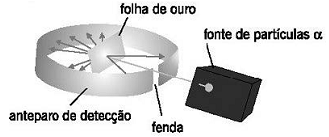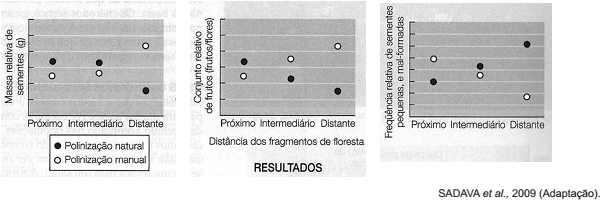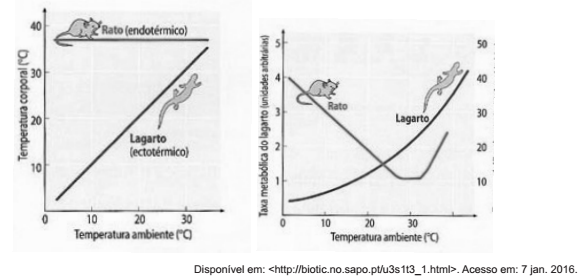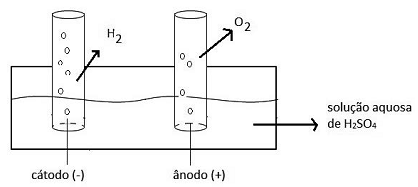Questões Militares
Para aspirante do corpo de bombeiro
Foram encontradas 1.776 questões
Resolva questões gratuitamente!
Junte-se a mais de 4 milhões de concurseiros!

Disponível em: https://=j&q=&esrc=s&source=images&cd=&cad=rja&uact=8&ved=&url=http%3A%2F%2Fhotneukpopge.890m.com%2Fdia%2Fdia‐do‐ . Acesso em: 18 ago. 2015.)

Disponível em: https://=j&q=&esrc=s&source=images&cd=&cad=rja&uact=8&ved=&url=http%3A%2F%2Fhotneukpopge.890m.com%2Fdia%2Fdia‐do‐ . Acesso em: 18 ago. 2015.)
Leonardo da Vinci
Known as the greatest artist in the history of mankind, Leonardo da Vinci was also a great philosopher and scientist. Leonardo is the most influential figure in the Italian Renaissance and he is considered to be an inventive multi-genius.
Leonardo was born in 1452 in Vinci, Italy, as the child of Piero da Vinci, a notary, and Caterina, a country girl. He stayed with his father's family and they moved to Florence when he was just 12. At the age of 14, Leonardo started out his artist's apprenticeship at the studio of Andrea del Verrocchio (1435-1488), an Italian sculptor, goldsmith and painter.
The art of painting made Leonardo knowledgeable about anatomy and perspective. In addition to painting, Verrocchio's studio also offered technical and mechanical arts and sculpture. Leonardo had developed an interest in architecture so he went on to study engineering.
After a decade of highly original work as an artist, Leonardo wrote to several wealthy men to help finance his projects. The Duke of Milan, Ludovico Sforza (1452-1508), accepted his offer as Leonardo told him that he could design war weapons like guns and mines, and also structures like collapsible bridges. He lived in Milan with the Duke from 1482 to 1508, reportedly creating very innovational war machines. He also did painting and sculpture, as well as urban planning for large-scale water projects. There, he also wrote about making a telescope to view the moon.
Available at: <http://www.famousscientists.org/leonardo-da-vinc> (Edited).
Read this sentence from the text and analyze it:
“The Duke of Milan, Ludovico Sforza (1452-1508), accepted his offer as Leonardo told him that he could design war weapons like guns and mines, and also structures like collapsible bridges.”
This sentence presents an example of reported speech. Which of the following alternatives also presents an example of reported speech?
Leonardo da Vinci
Known as the greatest artist in the history of mankind, Leonardo da Vinci was also a great philosopher and scientist. Leonardo is the most influential figure in the Italian Renaissance and he is considered to be an inventive multi-genius.
Leonardo was born in 1452 in Vinci, Italy, as the child of Piero da Vinci, a notary, and Caterina, a country girl. He stayed with his father's family and they moved to Florence when he was just 12. At the age of 14, Leonardo started out his artist's apprenticeship at the studio of Andrea del Verrocchio (1435-1488), an Italian sculptor, goldsmith and painter.
The art of painting made Leonardo knowledgeable about anatomy and perspective. In addition to painting, Verrocchio's studio also offered technical and mechanical arts and sculpture. Leonardo had developed an interest in architecture so he went on to study engineering.
After a decade of highly original work as an artist, Leonardo wrote to several wealthy men to help finance his projects. The Duke of Milan, Ludovico Sforza (1452-1508), accepted his offer as Leonardo told him that he could design war weapons like guns and mines, and also structures like collapsible bridges. He lived in Milan with the Duke from 1482 to 1508, reportedly creating very innovational war machines. He also did painting and sculpture, as well as urban planning for large-scale water projects. There, he also wrote about making a telescope to view the moon.
Available at: <http://www.famousscientists.org/leonardo-da-vinc> (Edited).
Read this sentence from the text and analyze it:
“After a decade of highly original work as an artist, Leonardo wrote to several wealthy men to help finance his projects.”
The word “wealthy” could be replaced without change of meaning by
Leonardo da Vinci
Known as the greatest artist in the history of mankind, Leonardo da Vinci was also a great philosopher and scientist. Leonardo is the most influential figure in the Italian Renaissance and he is considered to be an inventive multi-genius.
Leonardo was born in 1452 in Vinci, Italy, as the child of Piero da Vinci, a notary, and Caterina, a country girl. He stayed with his father's family and they moved to Florence when he was just 12. At the age of 14, Leonardo started out his artist's apprenticeship at the studio of Andrea del Verrocchio (1435-1488), an Italian sculptor, goldsmith and painter.
The art of painting made Leonardo knowledgeable about anatomy and perspective. In addition to painting, Verrocchio's studio also offered technical and mechanical arts and sculpture. Leonardo had developed an interest in architecture so he went on to study engineering.
After a decade of highly original work as an artist, Leonardo wrote to several wealthy men to help finance his projects. The Duke of Milan, Ludovico Sforza (1452-1508), accepted his offer as Leonardo told him that he could design war weapons like guns and mines, and also structures like collapsible bridges. He lived in Milan with the Duke from 1482 to 1508, reportedly creating very innovational war machines. He also did painting and sculpture, as well as urban planning for large-scale water projects. There, he also wrote about making a telescope to view the moon.
Available at: <http://www.famousscientists.org/leonardo-da-vinc> (Edited).
Leonardo da Vinci
Known as the greatest artist in the history of mankind, Leonardo da Vinci was also a great philosopher and scientist. Leonardo is the most influential figure in the Italian Renaissance and he is considered to be an inventive multi-genius.
Leonardo was born in 1452 in Vinci, Italy, as the child of Piero da Vinci, a notary, and Caterina, a country girl. He stayed with his father's family and they moved to Florence when he was just 12. At the age of 14, Leonardo started out his artist's apprenticeship at the studio of Andrea del Verrocchio (1435-1488), an Italian sculptor, goldsmith and painter.
The art of painting made Leonardo knowledgeable about anatomy and perspective. In addition to painting, Verrocchio's studio also offered technical and mechanical arts and sculpture. Leonardo had developed an interest in architecture so he went on to study engineering.
After a decade of highly original work as an artist, Leonardo wrote to several wealthy men to help finance his projects. The Duke of Milan, Ludovico Sforza (1452-1508), accepted his offer as Leonardo told him that he could design war weapons like guns and mines, and also structures like collapsible bridges. He lived in Milan with the Duke from 1482 to 1508, reportedly creating very innovational war machines. He also did painting and sculpture, as well as urban planning for large-scale water projects. There, he also wrote about making a telescope to view the moon.
Available at: <http://www.famousscientists.org/leonardo-da-vinc> (Edited).
Leonardo da Vinci
Known as the greatest artist in the history of mankind, Leonardo da Vinci was also a great philosopher and scientist. Leonardo is the most influential figure in the Italian Renaissance and he is considered to be an inventive multi-genius.
Leonardo was born in 1452 in Vinci, Italy, as the child of Piero da Vinci, a notary, and Caterina, a country girl. He stayed with his father's family and they moved to Florence when he was just 12. At the age of 14, Leonardo started out his artist's apprenticeship at the studio of Andrea del Verrocchio (1435-1488), an Italian sculptor, goldsmith and painter.
The art of painting made Leonardo knowledgeable about anatomy and perspective. In addition to painting, Verrocchio's studio also offered technical and mechanical arts and sculpture. Leonardo had developed an interest in architecture so he went on to study engineering.
After a decade of highly original work as an artist, Leonardo wrote to several wealthy men to help finance his projects. The Duke of Milan, Ludovico Sforza (1452-1508), accepted his offer as Leonardo told him that he could design war weapons like guns and mines, and also structures like collapsible bridges. He lived in Milan with the Duke from 1482 to 1508, reportedly creating very innovational war machines. He also did painting and sculpture, as well as urban planning for large-scale water projects. There, he also wrote about making a telescope to view the moon.
Available at: <http://www.famousscientists.org/leonardo-da-vinc> (Edited).

Disponível em:: <http://objetoseducacionais2.mec.gov.br/bitstream/handle/mec/12908/08_avaliacao.htm> . Acesso em: 11 jan. 2016.
Com esse experimento, é possível concluir:
Utilizando a lente de uma luneta, João consegue projetar a imagem de seu celular na parede branca de seu quarto.
Sobre a lente utilizada por João, é CORRETO afirmar:
Para descer por um toboágua, uma criança empurra para trás um suporte fixado acima da entrada desse brinquedo, a fim de que ela seja impulsionada.
Supondo que esse toboágua tenha 19,8 metros de altura, que não possua atrito e que a água não influencie na queda da criança e considerando que essa criança chega ao solo com uma velocidade de 72 km/h, é CORRETO afirmar que a velocidade inicial dela é de:
Três esferas metálicas idênticas A, B e C, com a quantidade de carga 6 μC, –10 μC e –18 μC, respectivamente, são colocadas no vácuo em contato, da seguinte forma:
• tocam-se as esferas A e B, deixando-se a esfera C muito distante;
• e, em seguida, tocam-se as esferas B e C, deixando-se a esfera A muito distante.
Após esse procedimento, as três esferas são fixadas de modo alinhado, e as esferas B e C distam da esfera A 3 m cada uma, segundo a figura a seguir.

Nessas condições, é CORRETO afirmar que a força resultante sobre a esfera B é de:
(Considere a constante eletrostática de 9,0 x 109
N.m2
/C2
)
Uma aluna classifica diversos tipos de ondas como transversais ou longitudinais e como mecânicas ou eletromagnéticas.
Sobre o estudo de ondas, é CORRETO afirmar que:
Os gráficos a seguir são os resultados de um experimento que analisou o efeito da distância entre plantios e fragmentos florestais. Analisou-se como a distância influencia as características reprodutivas do vegetal cultivado, seja na polinização manual ou na polinização natural. Nesses fragmentos, foram encontradas populações de abelhas nativas polinizadoras.

A partir da análise dos gráficos, é CORRETO concluir que:
Observe os seguintes gráficos a respeito da alteração da temperatura do meio ambiente de dois vertebrados.

A partir da análise dos gráficos, é CORRETO concluir:
A constituição do solo de uma área com vegetais é diretamente afetada pelos tipos de plantas que ali crescem. A serapilheira é a principal fonte de minerais, pois é formada pela decomposição promovida por microrganismos e animais, formando o húmus.
Esse tipo de adubo tem como função:
Garagens fechadas devem, obrigatoriamente, possuir mecanismos de ventilação natural ou mecânica. pois a inexistência desses mecanismos pode causar asfixiamentos nos usuários dessas garagens.
Esse asfixiamento é causado, sobretudo:
Nos últimos meses, tem-se discutido sobre o uso de uma substância química, a fosfoetanolamina, anunciada como a cura para diversos tipos de cânceres. A estrutura química da fosfoetalonamina é descrita a seguir e tem o fósforo como o átomo central.

Sobre a estrutura química da fosfoetalonamina, analise as seguintes afirmativas:
I. A geometria molecular da fosfoetanolamina é piramidal.
II. A fosfoetalonamina tem 15 ligações sigma e uma pi.
III. A fosfoetalonamina é um composto covalente polar.
Estão CORRETAS as afirmativas:
Considere que o pH estomacal seja igual a 2. Quando o fármaco ácido acetilsalicílico (AAS) é ingerido, no estômago sofre ionização em meio aquoso, estabelecendo o seguinte equilíbrio:
AAS(s) + H2O(l)  H3O+(aq) + AAS–(aq) ΔH < 0
H3O+(aq) + AAS–(aq) ΔH < 0
Nessas condições, é CORRETO afirmar que a ionização do AAS é:

Com relação ao experimento, dentre as substâncias iniciais e as que foram formadas no processo de eletrólise da água, são consideradas substância simples, composta e mistura, respectivamente: